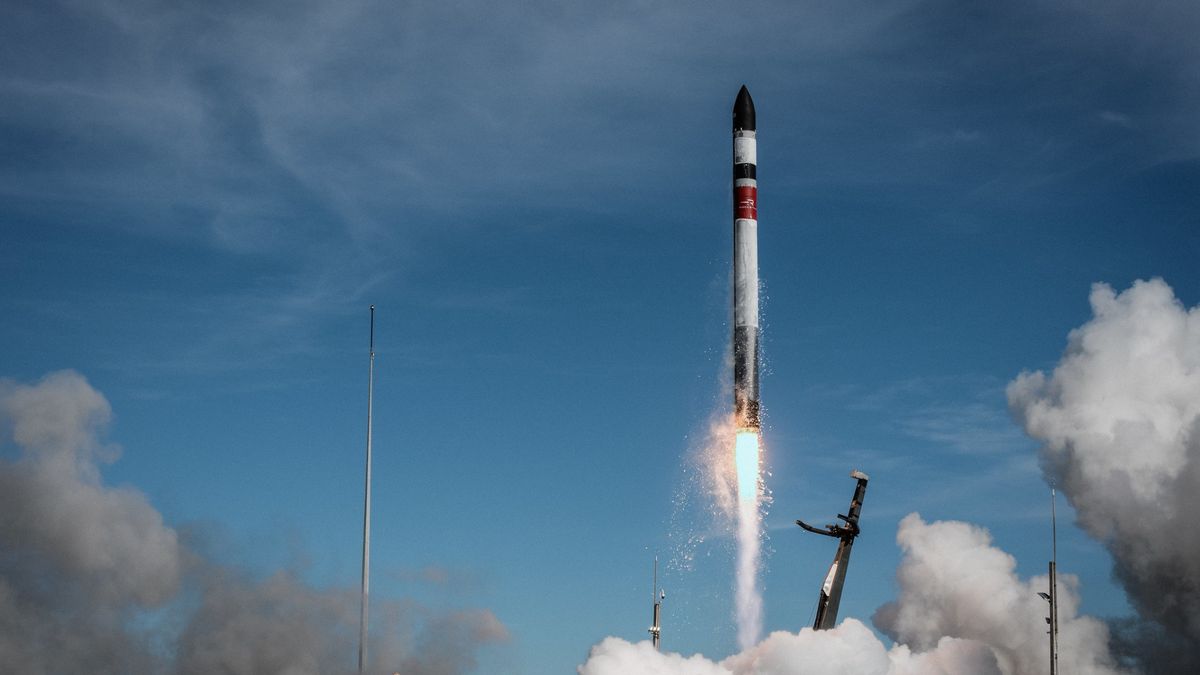2 min read Preparations for Next Moonwalk Simulations Underway (and Underwater) Pictured at sunset is Marshall Space Flight Center’s Propulsion R&D Lab, Building 4205. NASA/Charles Beason The National Aeronautics and Space Administration (NASA) has prepared a Draft Environmental Assessment (EA) that analyzes the environmental impacts of implementing continuing and future mission support activities at the Marshall Space Flight Center (MSFC) in Huntsville, Alabama. The EA evaluated the potential environmental effects associated with air quality; climate change and greenhouse gases; land use; water resources; biological resources; geology and soils; noise; traffic…
Read MoreMonth: April 2024
Boeing Starliner 1st astronaut flight: Live updates
Refresh 2024-04-26T19:42:30.435Z 1st Starliner astronauts finish dress rehearsal before May 6 launch NASA astronauts Butch Wilmore and Suni Williams finished a big dress rehearsal before their historic launch upon Boeing Starliner no earlier than May 6, agency officials said Friday (April 26) hours after the rehearsal finished. “Wilmore and Williams completed a series of launch day milestones including suiting up, working in a flight deck simulator, and operating the same software that will be used during the launch,” NASA officials wrote in a blog post on Friday (April 26). The…
Read MoreUS Space Force picks Rocket Lab for 2025 Victus Haze space domain awareness mission
The continued push for space domain awareness comes with contracts between the U.S. Space Force and space services companies to create missions that will align with national security needs. Earlier this month, Rocket Lab announced a $32 million contract with Space Systems Command (SSC), an organization within the U.S. Space Force responsible for the service’s development and acquisition of new space technologies and capabilities. The contract is to develop a spacecraft and command and control center for the VICTUS HAZE Tactically Responsive Space (TacRS) mission that aims to quicken the…
Read MoreNASA-Led Study Provides New Global Accounting of Earth’s Rivers
5 min read Preparations for Next Moonwalk Simulations Underway (and Underwater) The Colorado River supplies water to more than 40 million people as it snakes through seven U.S. states, including the part of southeastern Utah seen in this photo snapped by an astronaut aboard the International Space Station. The Colorado basin was identified in a NASA-led study as a region experiencing intense human water use. NASA The novel approach to estimating river water storage and discharge also identifies regions marked by ‘fingerprints’ of intense water use. A study led by…
Read MoreHubble Spots a Magnificent Barred Galaxy
This NASA/ESA Hubble Space Telescope images showcases the galaxy NGC 2217. ESA/Hubble & NASA, J. Dalcanton; Acknowledgement: Judy Schmidt (Geckzilla) The magnificent central bar of NGC 2217 (also known as AM 0619-271) shines bright in the constellation of Canis Major (The Greater Dog), in this image taken by the NASA/ESA Hubble Space Telescope. Roughly 65 million light-years from Earth, this barred spiral galaxy is a similar size to our Milky Way at 100,000 light-years across. Many stars are concentrated in its central region forming the luminous bar, surrounded by a set of tightly wound spiral arms.…
Read MoreNASA SCoPE PI, Meenakshi Wadhwa, inducted to National Academy of Sciences
2 min read NASA SCoPE PI, Meenakshi Wadhwa, inducted to National Academy of Sciences On April 26, 2024, the National Academy of Sciences (NAS) welcomed a new cohort of outstanding members into its ranks, including Principal Investigator (PI) Meenakshi Wadhwa of NASA SCoPE – the NASA Science Mission Directorate Community of Practice for Education. At the induction ceremony, 120 new members and 23 international members were welcomed, expanding the NAS’s active membership to 2,565 and its international membership to 526. Wadhwa’s induction into the NAS recognized her groundbreaking contributions to…
Read MoreIdentification of Noise Sources During Launch Using Phased Array Microphone Systems
Identification of Noise Sources During Launch Using Phased Array Microphone Systems Every part of a launch vehicle, launch pad, and ground operation equipment is subjected to the high acoustic load generated during lift-off [1]. Therefore, many extreme measures are taken to try to suppress this acoustic environment by damping with a water deluge system and diverting engine plumes away from the vehicle via flame trenches. Even single decibel reductions of the acoustic levels can translate into a sizable reduction of acoustic loadings, certification needs, operational costs, and even vehicle weight.…
Read MoreNASA Grant Brings Students at Underserved Institutions to the Stars
5 min read Preparations for Next Moonwalk Simulations Underway (and Underwater) Julia Chavez examines an experiment within an oxygen-free chamber at NASA’s Jet Propulsion Laboratory in March. Chavez is one of several students from California State University, Los Angeles who are interning at JPL’s Origins and Habitability Lab. NASA/JPL-Caltech Cathy Trejo (right) shows off a tube filled with pebbles designed to mimic Martian regolith. During experiments, fluid is flushed through the tube many times, giving JPL astrobiology interns like Trejo and Julia Chaves (left) the chance to study how chemicals…
Read MoreTrajectory Reverse Engineering
A strategy for transferring spacecraft trajectories between flight mechanics tools, called Trajectory Reverse Engineering (TRE), has been developed[1]. This innovative technique has been designed to be generic, enabling its application between any pair of tools, and to be resilient to the differences found in the dynamical and numerical models unique to each tool. The TRE technique was developed as part of the NESC study, Flight Mechanics Analysis Tools Interoperability and Component Sharing, to develop interfaces to support interoperability between several of NASA’s institutional flight mechanics tools. The development of space…
Read MoreNASA’s Hubble Pauses Science Due to Gyro Issue
2 min read NASA’s Hubble Pauses Science Due to Gyro Issue The Hubble Space Telescope as seen from the space shuttle Atlantis (STS-125) in May 2009, during the fifth and final servicing of the orbiting observatory. NASA NASA is working to resume science operations of the agency’s Hubble Space Telescope after it entered safe mode April 23 due to an ongoing gyroscope (gyro) issue. Hubble’s instruments are stable, and the telescope is in good health. The telescope automatically entered safe mode when one of its three gyroscopes gave faulty readings.…
Read More








